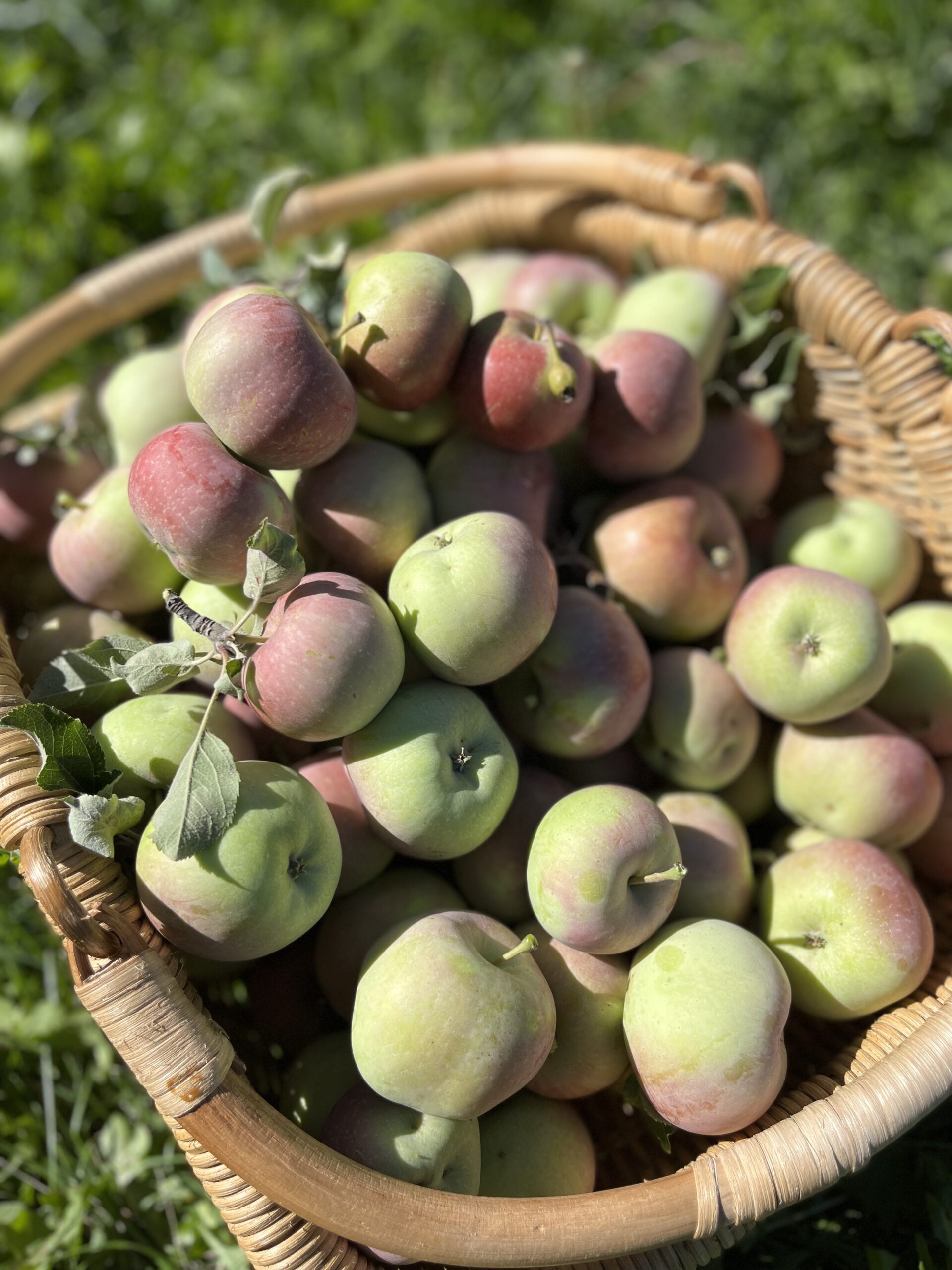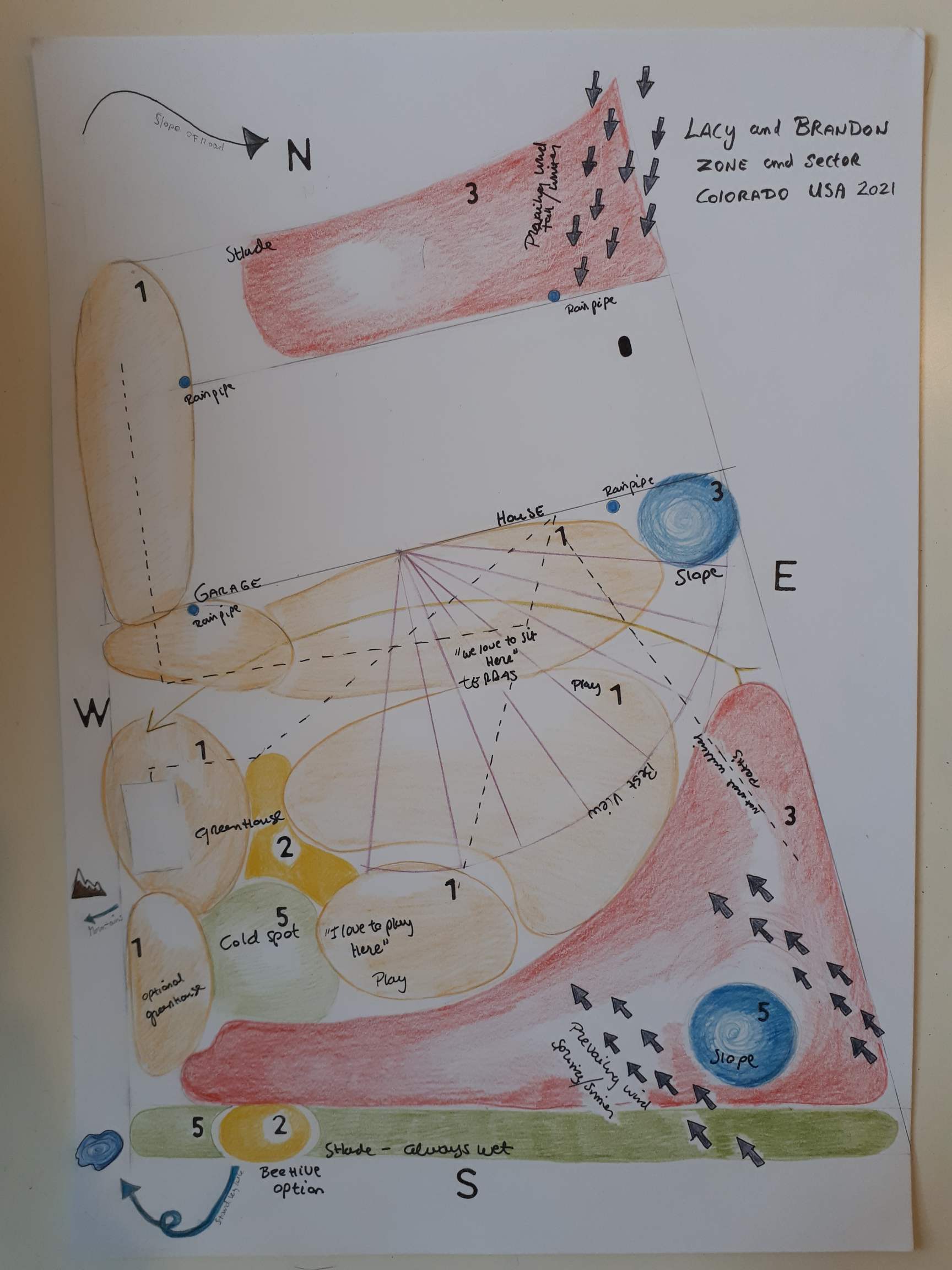When we bought our home more than a decade ago now, one of the big selling factors for us was the huge back yard. We loved the idea of having a dog and a kid who would want to use all that space to run around and play, and we loved the idea of growing our own food on our own little plot of land.
And a lot of that has come to fruition. We do, indeed, have a dog and a kid who love to play in the yard, and we do grow some food. A majority of the plants and trees we’ve added over the past 10 years have been food-bearing — including blackberries and raspberries, peach and cherry trees, pecan and walnut trees, and an annual vegetable garden.
But what we’ve realized over the years is that we don’t have an overall, cohesive plan to our additions. We’ve been adding things haphazardly. Our soil is crap, but we don’t want to add a ton of chemicals. And because we’re working with all these disadvantages (crap soil, desert climate, hot summers, short growing season) our vegetable harvests have been less than inspiring.
Choosing priorities
Recently, my husband and I sat down and started talking about our priorities for fixing up the house and different projects. There’s a huge range — everything from swapping out the ugly 1970s hollow wood doors for nice six panel ones in our upstairs, to getting a new swamp cooler (which has suddenly broken and moved up on the priority list!), to adding solar panels and putting in a second full bath in our bedroom.
Getting a designer to help us create a plan for our yard came in pretty high on the list. Ultimately, we decided that, because updating the yard was going to be such a big project, getting the design needed to come now, as that is (obviously) the first step.
Choosing a designer
From my own research, I wanted a landscape design rooted in permaculture. Permaculture is about looking at a space as a whole system — not just plants and soil but animals, humans, wildlife, and how we use the space. It considers both inputs (keeping them as low as possible and outputs). Permaculture designs put the biggest emphasis on perennial, local plants and on using the natural features of the landscape rather than trying to work against them. The result is a much more natural look (not for fans of super structured landscape design!), but a highly productive, usable space.
We started by just searching for permaculture designers in the Denver area — and there are a few, but none of them got back to us, or worked in our area.
Serendipitously, I was in a business mastermind with Marjolein Schuit, a world-class permaculture and design expert based in the Netherlands. I asked her if she had any contacts in her network in Colorado and she replied — I can do it for you.
Virtual permaculture design services??
To be sure, Marjolein’s qualifications far exceeded anything we could have hoped for. Not only is she an expert in permaculture and soil restoration, but she’s also studied historical garden design, and her designs are a unique blend of the beautiful and the functional.
But, of course, we were curious how she could possibly do a permaculture design for our land when she couldn’t visit it. The designs usually take all sorts of physical factors into account, including sun and wind exposure, elevation of the ground in all the distinct areas of the land, soil composition, water, etc. etc.
Amazingly, Marjolein has a process that allows her to take all of that into account even halfway around the globe.
After we signed up with her, she asked us to take lots of photos and videos of our yard, which we sent to her before our consulting call with her. On her own, she studied Google satellite images of our property, the climate, the prevailing winds, the annual rainfall, the native plant lists, and on and on — as much as 20 hours of research, she told us.
Finally we got on our call together, and the questions she asked us were so interesting and unexpected…
- How do you experience your garden?
- What do you love to do? How do you use the space?
- How do you know in your body when winter starts?
- What’s your big vision for your garden?
We were amazed at her ability to intuit what is going on with our yard from our descriptions — like the fact that she figured out we have cold pockets that affect our plans and cause trees and flowers to bloom later than others in our neighborhood.
After our call, she did a video about our project and her process that you can watch here:
The waiting is the hardest part
After our call with Marjolein we are all SO EXCITED to get this project going — but like a plant, these things take time to grow and blossom.
As she describes in the video above, her design process can take up to 12 weeks to arrive at the final plan — which will not only include a beautifully drawn design, but a plant list, and a “manual” that will tell us exactly what to do and when, as well as a recommendation for someone here locally who can help us implement.
And, in reality, a lot of the first steps will be things like taking out old dying trees, amending the soil, building and moving certain hardscape elements, and so on before we ever start planting.
Still, it’s fun to dream and imagine what will hopefully be a reality in the near future:
- We talked about a food forest of food-bearing trees, vines, and shrubs that will also serve as a natural wind break.
- New trees to shade Devyn’s play area to make it even more enjoyable for her.
- A pond (!) and wetland area. The swampy low area will help water the trees in the food forest; the pond will serve as a way to filter the wastewater from Brandon’s reverse osmosis system to make it useable for our plants and garden.
- A second greenhouse — for FOOD, Brandon, not more carnivorous plants — to grow nightshades and other annuals that don’t do super well in our climate.
- Moving our annual kitchen garden closer to the house with hügelkulture beds.
- Rain barrels to collect water for the gardens naturally.
- And tons of flowers that I can cut and bring inside for arrangements that will bloom throughout the year.
It sounds so dreamy…
One other thing Marjolein suggested was adding a root cellar — because she’s had clients in the past who had no way to store all the food they were growing and it ended up going to waste.
I’ve experimented in the past with using our garage as a root cellar with mixed results — but what gets me most excited about the idea of excess food is the idea of using some of it to feed our community. Luckily, one of our local food banks in Broomfield accepts fresh food, so we can donate any delicious excess to them.
Leaving a legacy
One of the reasons we wrestled with investing in a permaculture design now is that we don’t actually know if this is our “forever” home.
As much as we love our area, there are any number of things that might make us move. Our house is aging; climate change means the summers are getting hotter and drier here all the time and the air quality is terrible from summer wildfires that don’t seem likely to end any time soon; and who knows where Devyn will end up once she flies from the nest.
But my philosophy around home improvements has always been to do things now, while we can enjoy them. I understand why people do things like paint, or put in new carpet, or spruce up the yard right before they try to sell their home but why wait?
In addition, having a beautiful, productive yard will be an incredible incentive for the right buyer if and when we ever do decide to sell — and what a legacy to leave behind! Sure, it’s not even an acre of land, but it’s a patch that will be healthier, happier, and contribute to the healing of the land all around us.
And that’s got to be a good thing.



8h1z7m
0jms0b